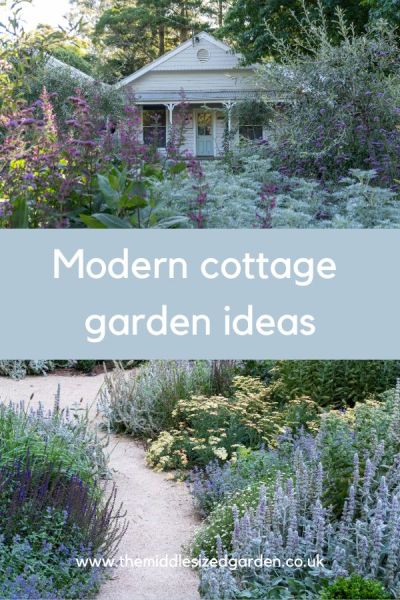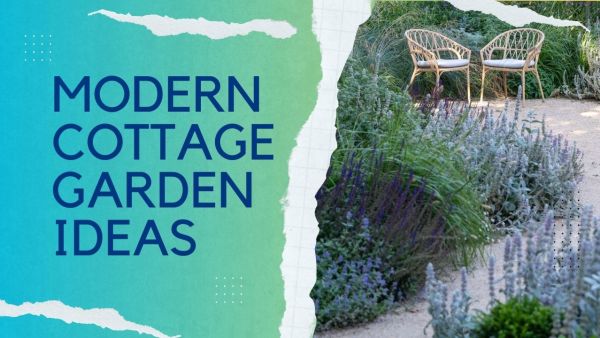Contemporary cottage garden style – the power of the 70/30 rule
A contemporary cottage garden fuses traditional cottage style with ‘naturalistic planting’, according to garden designer, Tim Pilgrim.
‘It uses common plants – both edible and ornamental – as in traditional cottage garden planting, but planted in larger drifts. And there’s more thought to colour palette and repetition,’ he says.
He’s gained a lot of publicity for his recent design for Oak Cottage, near Melbourne, Australia. The garden is just over a year old but already looks full and pretty. It uses cottage garden plants that are widely used in both the UK, the US and around the world, planting them in naturalistic groupings.
And he has a ’70/30′ rule for successful planting.
(See this post for more about what naturalistic planting is and how it can work in your garden.)
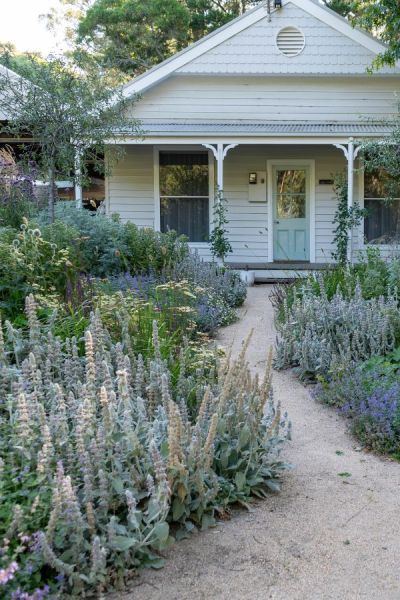
Contemporary cottage garden planting design at Oak Cottage by Tim Pilgrim.
Where to start with contemporary cottage garden style
Tim advises starting with the architecture of the house and its surroundings.
Oak Cottage is a traditional, geometric colonial bungalow, which is both a historic Australian style and reflects similar architecture of the age all over the world. The name comes from the giant oak tree, which towers over the front garden.
And beyond the front fence are eucalyptus trees and an unmade ‘country’ road. There are many other houses nearby, but the trees and shrubs make it feel rural and private.
So the planting both framed the house and blended into ‘the bush’ beyond.
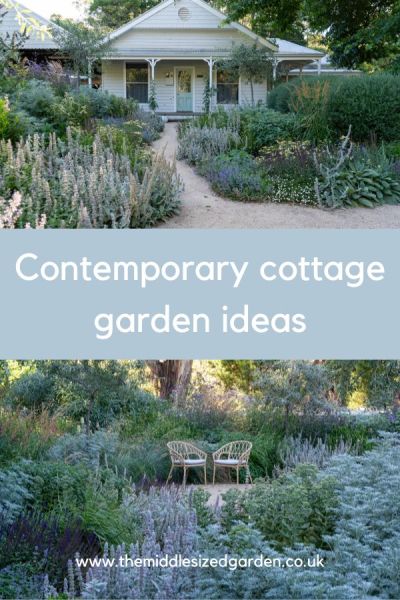
A modern twist on an old favourite – easy cottage garden plants planted in contemporary ‘drifts’. Beyond the chairs, you can see the eucalyptus trees and ‘the bush’ on the other side of the fence – there’s a real feel of country, although there are other houses in the road.
Tim borrowed the pastel blues and greys of Oak Cottage for the planting theme. The grey of the eucalyptus trees nearby is also reflected in the grey leaves of plants, such as Stachys byzantina and Artemisia.
‘And there is lots of green from the oak tree,’ he says. So the greys are a good foil for the green.
Although the architecture of the cottage is quite geometrical, the ‘front door’ is offset from the entrance. It’s also no longer the actual front door – that’s now round to one side. So the garden design and the paths deliberately curve and wind to frame the house but to distract from rather than lead to the door as an entrance.
The 70/30 rule for successful planting
Tim has a ’70/30′ approach to contemporary cottage garden planting. ‘Seventy per cent of the plants I choose are easy, ‘safe’ plants,’ he says.
They’re plants that will grow well in your environment. Such plants are the key to both cottage garden style and naturalistic planting.
‘Plant them in blocks – in groups of threes to sevens,’ says Tim. ‘Then repeat them, so if you’re planting a line down a path, you draw the eye along into the picture.’
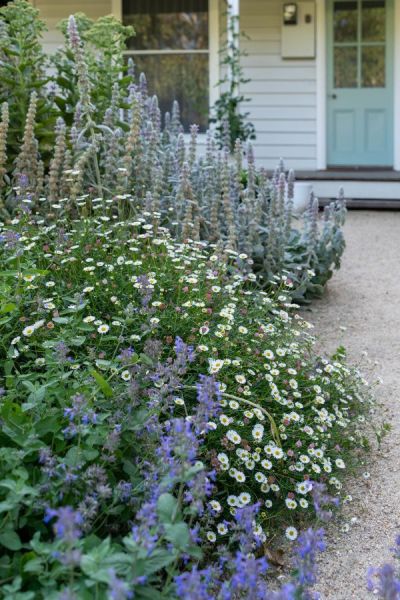
Large blocks of ‘safe’ plants which thrive in your environment lead the eye down the front path. These are Nepeta ‘Dropmore’, Erigeron karvinskianus and Stachys byzantina (Lamb’s Ears).
Plants that Tim considers ‘safe’ include Nepeta, Erigeron karvinskianus (Mexican daisy), Stachys byzantina, Red valerian (Centranthus ruber), Verbena bonariensis and some of the salvias.
‘Then once you’ve got that 70% covered, think about experimenting with the other 30%. They can be more sporadically placed – you can get some lovely highlights.’
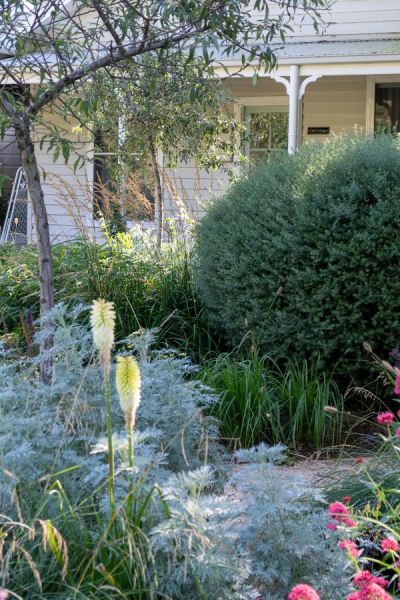
This yellow kniphofia ‘Ice Queen’ is one of the ‘30% experiment’. It adds zing to the calm, pretty colour scheme.
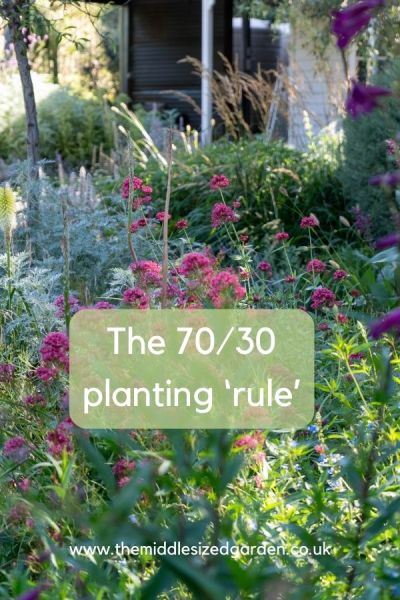
Here the ‘safe’, easy-to-grow plants include Red valerian (Centranthus ruber), Artemisia and a splash of buddleia.
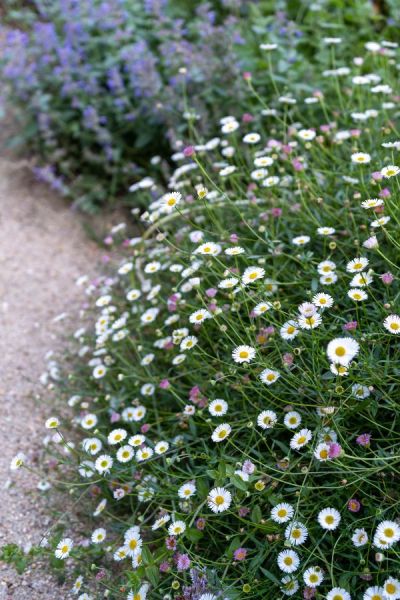
Erigeron karvinskianus is an easy-grow contemporary cottage garden plant that has a long flowering period. It self-seeds freely – but it’s easier to pull plants out rather than plant them in!
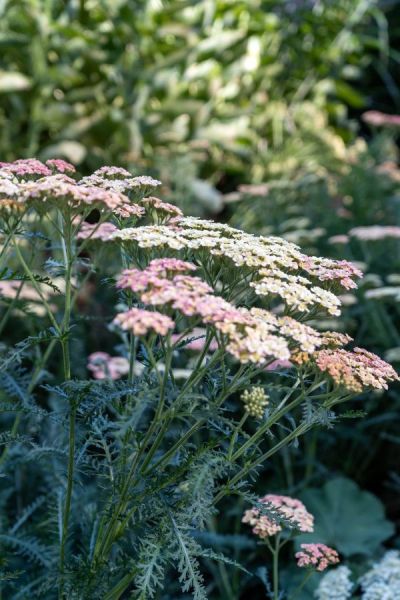
Achillea ‘Pineapple Mango’ was one of Tim’s experiments. It has flowered from late spring to late summer, turning from pink to a butter-yellow.
Update the cottage garden look with grasses
When I asked Tim how to add an element to a cottage garden to make it feel more contemporary.
‘I think grasses are the way to bring it up to now,’ he says. ‘They weren’t used traditionally in gardens but they give a relaxed feel, introduces more movement and adds an element for wildlife.
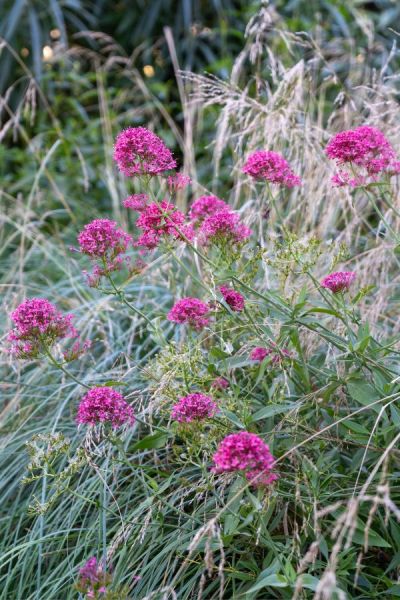
Centranthus ruber (Red valerian) with ornamental grass Poa labillardierei (Australian Blue Grass) make a contemporary cottage garden combination.
Landscaping the contemporary cottage garden
Cottage gardens don’t typically have very much formal landscaping. So Tim kept it simple with informal sand paths and local landscaping materials.
While he didn’t do formal raised beds, he did raise the earth into mounds. ‘We cut into the earth to make sure some areas were flat and instead of taking the soil away, we used it to accentuate natural mounds,’ he said. The result is that there’s higher planting at the back or centre of some of the borders, which makes it look as if the planting is wrapped around the house. And it shows off plants better.
Use natural, hand made or local materials in a cottage garden. One of these raised beds is bordered with chunky timbers, and there are also chunky timber steps.
Tim edged the path around the oak tree with corten steel, which is a contemporary material and visually ‘disappears’ into the sand.
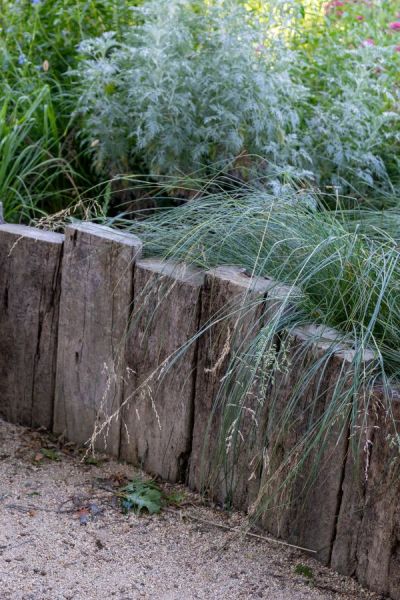
Some soil has been mounded up to give the border some height. This is edged with chunky rustic timbers.
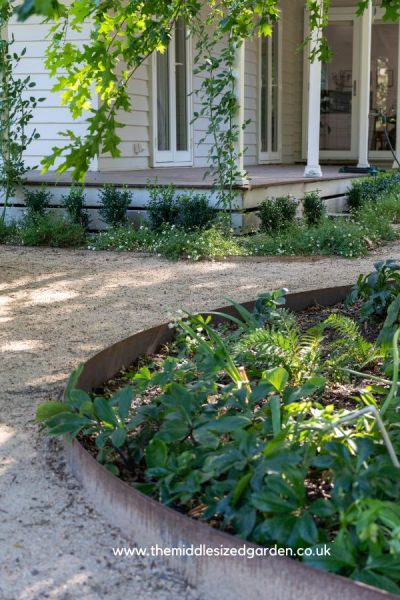
A thin edging of corten steel around the oak tree creates a shady ‘woodland edge’ border. The corten steel disappears visually.
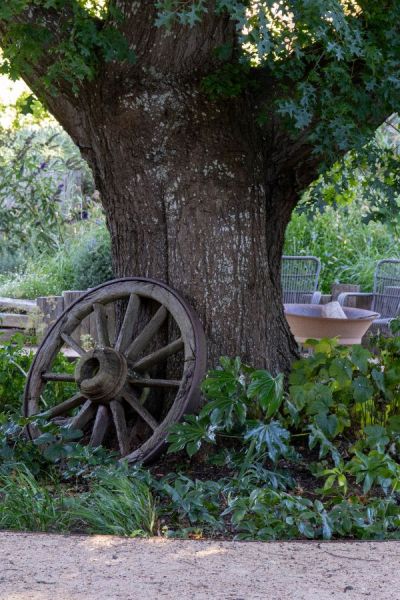
An ancient oak tree in the front garden creates micro-climates. Tim says that the tree provides an area for shady woodland planting, which contrasts with a dry, full-sun planting elsewhere in the garden. And the fallen leaves in autumn make a very good mulch.
Furniture for a contemporary cottage garden
Once again, Tim chose natural materials, such as cane and wood for the furniture.
‘I think relaxed shapes work well – nothing too hard edged and modern,’ he says.
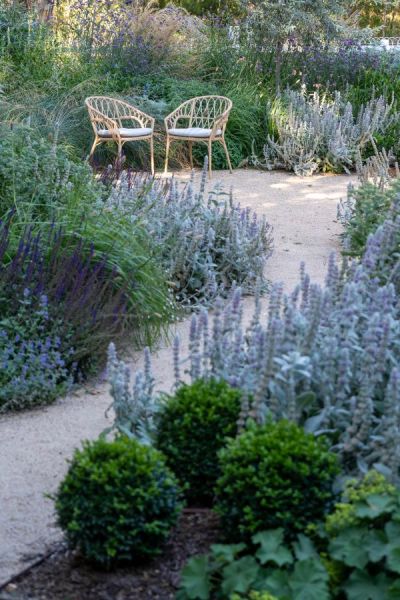
Cane chairs in a modern style.
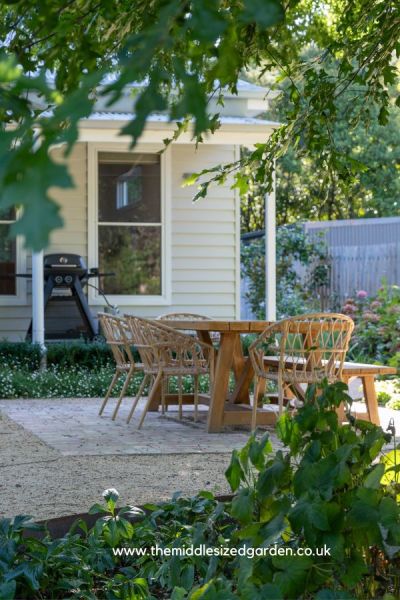
A dining table and chairs in a relaxing mix of wood and cane.
More cottage garden tips and inspiration
Discover the basic principles of cottage garden style in What is cottage garden style and how to achieve it. For a cottage garden created with salvaged finds, hand-downs and junk shop finds, see Kathy’s Rustic cottage garden on a shoestring budget – a garden which was created from a field in less than two years.
And if you love cottage garden style, but live in a part of the world where there are few traditional cottage garden plants, then don’t miss Bill Bampton’s take on a ‘cottage garden mash-up‘. It explains how to use the principles of the cottage garden and adapt them to create a charming garden that works where you are.
See round this pretty cottage garden in video
You can often see more of a garden in video, so don’t miss this tour of Oak Cottage: https://youtu.be/IGb6mihkynQ
Pin to remember contemporary cottage garden ideas
And do join us – see here for a free weekly email with more gardening tips, ideas and inspiration.
